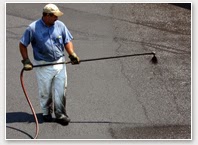Pennsylvania
Department of Transportation
Releases Revised Temporary Traffic Control
Guidelines
Penn
DOT (Department of Transportation) has released the March 2014 Edition of
Temporary Traffic Control Guidelines. The manual has been expanded with
additional diagrams and schemes of various type of situations which are most
common in the field. The colored version of the publication is especially
helpful in drawing attention to different aspects of the traffic control
depiction. Penn Dot is placing a firm emphasis on reducing work zone deaths,
and this is an excellent stepping stone for that goal.
Penn
DOT has indicated that the publication applies to contractors, utilities,
Federal, State, County and Municipal governments, while performing
construction, maintenance, emergency, permit work, utility work, and any other
type of work on highways, or so closely adjacent to a highway that workers,
equipment and or materials encroach on the roadway or interfere with the normal
movement of traffic. Customized temporary traffic control setups, which differ from
the various drawings in the publication will require Penn DOT District Traffic
Unit approval prior to any implementation.
Penn
Dot also has three Regional Traffic Management Centers for the state. Western,
Central and Eastern Regions. The centers operate 365 days a year and 24 hour a
day. When you will be establishing a work zone you must contact the regional
center for the area (a map with the regions and their phone numbers are located
on page 2 of the publication) at least 15 minutes before beginning work within
the roadway. Additional information you will be required to provide to the
regional management center will be:
a)
The location of the work (county, state route
number, etc.)
b)
The beginning time of the traffic restrictions
c)
The type of traffic restrictions drivers will
encounter
d)
The PATA number of the traffic control Diagram
being utilized
e)
The expected time you anticipate traffic
patterns to return to normal
f)
Your information – company name, phone number
for contact, your position with the company, what type of work you will be
performing and anything else the center may request from you.
There are
various other changes and information D. E. Gemmill Inc. intends to share with our customers and readers over the next several
months. If you have questions regarding the new publication please feel free to
contact D. E. Gemmill Inc. and we will do our best to provide you with answers
or assist you in making contact with the appropriate state agencies.
“ Let’s
all work to make work zones safer for motorist and workers alike.”
*Information contained in this
article was taken from Penn DOT Publication 213 – March 2014 Edition.
David E. Gemmill
D. E. Gemmill, Inc
1-866-755-9794
www.degemmill.com
http://www.degemmill.com/relevant_links.html
ftp://ftp.dot.state.pa.us/public/PubsForms/Publications/PUB%20213.pdf


